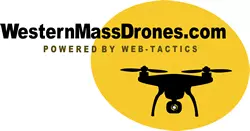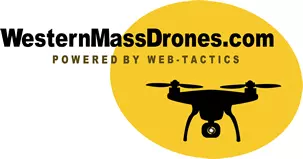5 Drone Inspection Tasks Essential for Winter
From the risk of ice dams forming on roofs to snow-laden trees threatening property boundaries, proactive care can prevent costly damage.
However, many of these tasks involve significant safety risks and logistical hurdles. Enter drone inspections can simplify maintenance, offering safer, faster, and more detailed inspections. For residential and commercial properties, drones provide a way to stay ahead of winter's worst, making upkeep manageable and efficient.
Roof Inspections
Winter weather can significantly strain rooftops, from heavy snow accumulation to the formation of ice dams that can lead to leaks and structural damage. Regular drone roof inspections are essential for preventing issues before they escalate, but climbing onto a roof in icy conditions is dangerous and time-consuming. Drones offer a safer, faster, and more efficient alternative.
With high-resolution cameras and live video feeds, drones can capture close-up views of a roof's surface, identifying missing shingles, cracks, and potential trouble spots that are often invisible from the ground. Property owners can save time and avoid risks while receiving precise visual data that supports informed decisions about necessary repairs. For large commercial properties, drones can quickly cover extensive areas, making inspections far more practical compared tomanual checks.
Gutter Check and Cleaning Assessment
Blocked gutters during winter can lead to significant issues, including ice buildup that can damage the fascia and even cause water to seep into the foundation. Ensuring that gutters are clear before and during winter is critical for bothresidential and commercial property owners. However, climbing ladders in icy conditions is not only labor-intensive butposes significant safety risks.
Drones make gutter inspections simpler, safer, and more efficient. With a quick flyover, drone photography can capture high-resolution images or videos of gutter conditions, identifying debris, ice dams, or potential problem areas. This visual data allows property owners to assess whether a cleaning or intervention is necessary—without ever needing to leave the ground.
Chimney Inspections
Regular chimney inspections are essential for properties that rely on wood or gas-burning fireplaces to identify structural issues, blockages, or accumulated creosote that can pose fire and safety hazards. Traditional inspections typically require professionals to climb onto roofs, risking falls and exposure to harsh winter conditions.
Drones offer a safer and more efficient solution by providing detailed visual inspections of chimneys from multiple angles. High-resolution footage can reveal cracks, debris, and obstructions that need attention. Drones drastically reduce inspection time for commercial properties with multiple chimneys or taller structures while providing an accurate assessment. This streamlined approach minimizes risk and supports proactive maintenance, keeping properties safe and ready for winter.
Property Perimeter and Fence Check
Winter storms and harsh weather conditions can cause significant damage to fences, walls, and property boundaries. Strong winds, snow accumulation, and ice buildup can weaken structures or cause unexpected damage, creating potential security risks and additional costs for repair. Regular inspections of these areas can help address problems before they escalate.
Drones are particularly useful for checking the perimeter and fences of large residential or commercial properties. Rather than walking the property on icy ground or navigating difficult-to-reach areas, drones can quickly and effectively survey the entire perimeter. High-resolution images and video can highlight signs of wear, breaks, fallen sections, or other vulnerabilities, helping property owners take swift corrective action. This approach saves time and ensures comprehensive coverage, even in challenging winter conditions.
Ice and Snow Accumulation Monitoring
Excessive snow and ice buildup can pose serious threats to roofs, gutters, and other critical structures. Heavy snow loads increase the risk of roof collapse, while ice accumulation can lead to leaks, structural strain, and dangerous icicles. Monitoring these conditions throughout the winter is crucial for ensuring safety and preventing damage.
Drones offer a practical way to monitor ice and snow accumulation without the need for physical inspections in hazardous conditions. By providing aerial views and real-time footage, drones can capture snow depth and distribution on rooftops, identify ice dams, and highlight areas where intervention may be necessary. This rapid assessment allows property owners to make informed decisions about snow removal and other measures to protect their buildings. Drones are especially beneficial for commercial properties, covering large areas efficiently and minimizing downtime for inspections.
FAQ Section: Drone Roof Inspections for Winter Maintenance
1. How accurate are drone inspections compared to traditional roof inspections?
Drone inspections can be highly accurate, offering detailed imagery and videos that capture even small cracks or missing shingles. While they may not replace the need for a hands-on inspection in certain cases, drones provide a comprehensive overview that is often comparable to or better than what can be observed from ground level.
2. Will a drone inspection detect hidden issues, like leaks under the surface?
Drones excel at capturing surface-level problems such as missing shingles, ice dams, and debris. However, hidden issues beneath the roof’s surface, like leaks or insulation problems, may require additional inspection methods or thermal imaging capabilities.
3. Is a drone inspection safe for my roof?
Yes, drone inspections are non-invasive. Unlike traditional methods, drones do not make direct contact with the roof, preventing potential damage from foot traffic or equipment. This makes them particularly well-suited for fragile or aged roofs.
4. Can drones still be used if the weather conditions are harsh?
While drones can fly in moderate weather conditions, high winds, heavy snowfall, or freezing rain may impact their effectiveness and safety. In these cases, inspections may be rescheduled for optimal weather to ensure reliable results.
5. How long does a typical drone roof inspection take?
Most drone roof inspections are completed in a fraction of the time needed for traditional inspections. For residential properties, the process may take less than an hour, while larger commercial properties may vary based on size and complexity.
6. Will I need to be present during a drone inspection?
While it isn’t mandatory, being present during the inspection can be helpful, especially if you want to ask questions in real-time or see the footage as it is captured. However, many service providers offer remote reviews with reports, photos, and video summaries.

